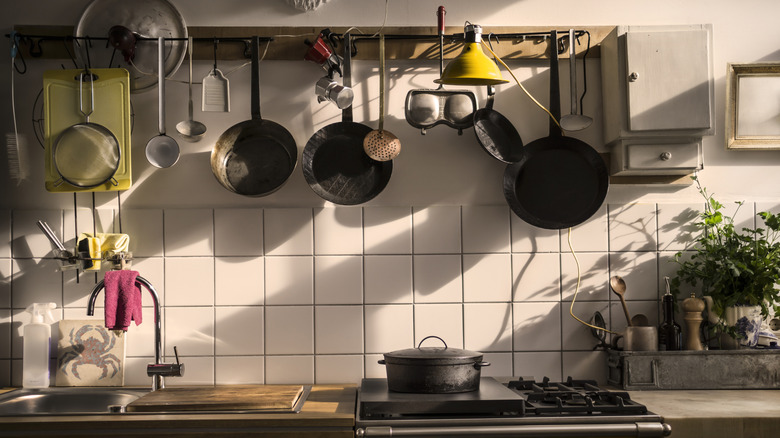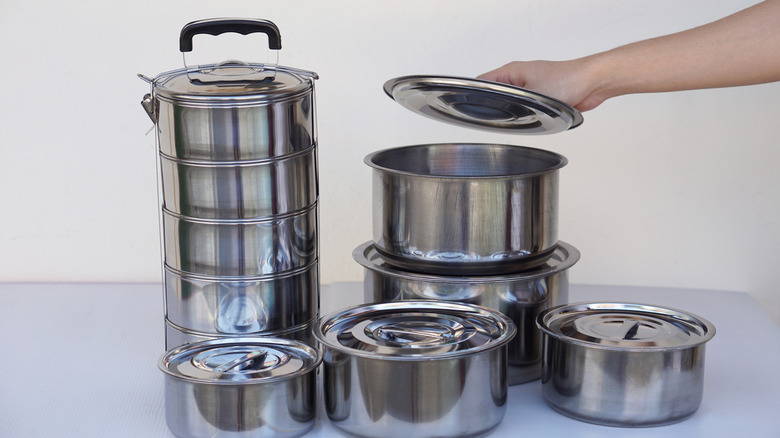How To Tell If Your Cookware Is Toxic (& What To Do About It)
When trying to achieve a greener and healthier home, you may reduce your reliance on common commercial cleaning products with unsafe chemicals for safer DIY cleaners instead. While this can help reduce adverse health risks, you may save a bit of money along the way, too. At the same time, this goal may require you to make changes in your kitchen that could cost a bit of cash upfront despite being worthwhile in the long run. These include tossing plastic items and purchasing safer glass or silicone versions instead. You may also need to swap out potentially toxic cookware items for other versions that won't leach chemicals into your foods.
One possible culprit is non-anodized aluminum cookware. These lack the non-stick surfaces that hard anodized aluminum contains, which are created to also help protect the cookware from scratches. When the aluminum cookware is not anodized, it's possible for lead to leach into your food. Such risks are even greater with acidic foods, such as sauerkraut, lemon juice, or tomato sauces. If you're unsure about whether your aluminum cookware is anodized, check the labels on the bottoms of the pots and pans, which may say the products are "hard anodized." You can also tell an aluminum cookware item is anodized if it is darker and sturdier. When in doubt, you may also consider contacting the manufacturer. Any aluminum that is not anodized ought to be tossed for safer alternatives, and you will also need to toss hard anodized cookware once it loses its non-stick qualities, as this may indicate it's damaged and no longer safe.
Stainless steel is a safer alternative to aluminum cookware to consider
Aluminum cookware is popular, and hard anodized versions are safer than non-anodized ones. However, a 2024 study published in the Journal of Exposure Science and Environmental Epidemiology found that stainless steel was even safer to cook with. After testing more than a dozen stainless steel cookware items, researchers found that any leached lead was minimal and far below safety hazards. If you prefer cooking with metal pots, pans, and other items, you may consider switching to stainless steel varieties. What you should know before buying stainless steel cookware, though, is that it carries the reputation of not cooking evenly, so some manufacturers will add aluminum or copper on the bottom of the cookware. As such, you will want to make sure any copper layers are not damaged and that any aluminum has been anodized by the manufacturer.
There are also other cookware items available that have other safety considerations to be aware of. First, while copper cookware may be preferred for making sauces because of its ability to heat evenly, these may pose the risk of gastrointestinal problems if copper leaches from unlined cookware. Cast iron is another popular alternative, but the material can scratch easily from cleaning mistakes and then rust, leading to iron toxicity when it leaches into foods. Finally, while ceramic, pottery, and enamel are used in certain cookware items, it's important that you only use those that are specifically intended for food use to prevent the ingestion of toxic chemicals.

